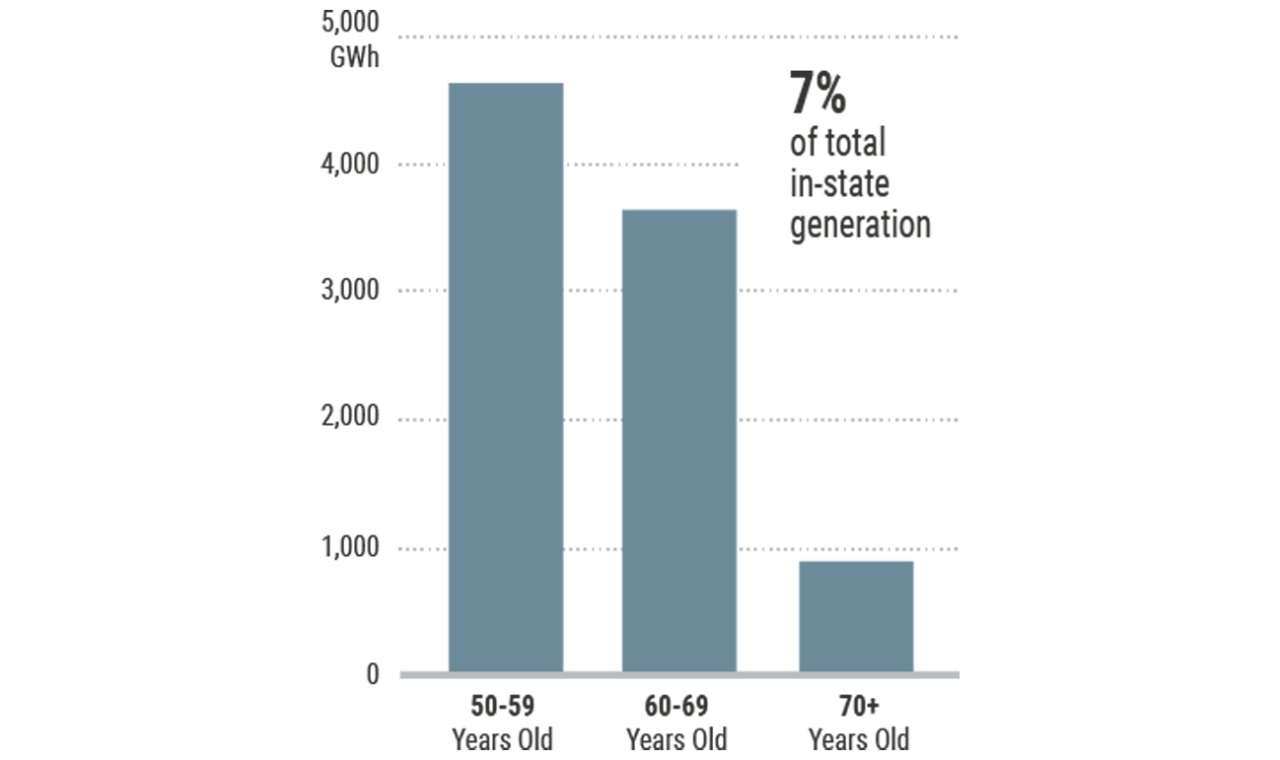New York’s Fossil-Fuel Fleet is Aging

Roughly 25% of the state’s total generating capacity is fossil-fuel-based generation that has been in operation for more than 50 years. As these generators age, they are experiencing more frequent and longer outages.
Greater difficulties in maintaining older equipment, combined with the impact of policies to restrict or eliminate emissions, may drive aging generators to deactivate, which would exacerbate declining reliability margins. Reliability concerns associated with the age and condition of New York’s fossil fleet were underscored this past winter by the outages of three units.
While contributing only 7% of the energy generated in the state, these units are often activated in times of peak demand, when reliability challenges are greatest. As a result, unexpected outages or failures of these aging generators can have significant reliability implications.
 In addition to the concerning issue of deteriorating performance of aging fossil-fuel generators, the pace of generator deactivations is exceeding the development and deployment of new generating resources. Since the passage of the state’s 2019 Climate Leadership and Community Protection Act, 4,315 MW have left the system while only 2,274 MW have been added. This net loss of more than 2,000 MW represents enough capacity to power roughly 2 million homes.
In addition to the concerning issue of deteriorating performance of aging fossil-fuel generators, the pace of generator deactivations is exceeding the development and deployment of new generating resources. Since the passage of the state’s 2019 Climate Leadership and Community Protection Act, 4,315 MW have left the system while only 2,274 MW have been added. This net loss of more than 2,000 MW represents enough capacity to power roughly 2 million homes.
Compounding these challenges is rising demand due to electrification of housing and transportation, large data centers and chip manufacturing plants, and other changing system conditions.
Deactivating fossil-based generation to meet the state’s climate policies will require large investments in renewable resources, energy storage, flexible generation, and transmission projects across the state to meet rising demand for electricity through 2040. To meet forecasted demand, generating capacity may need to triple within the next 20 years and include flexible resources that can be dispatched by grid operators in response to dynamic system needs.
Learn more
